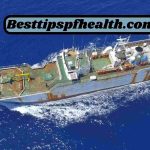How Data Science Can Be Used in Emergency Health Threat Detection and Assessment
Humans only have a limited capacity to recognize and prevent risk. We need both data and technology to identify, monitor, alert, and control potential threats that would otherwise take a single member of our society off guard. Data science can be a life saving when it comes to the assessment and detection of health threat but it also poses challenges. Not all data is worth studying and at first glance it appears to be too narrow a field to be applied to these more broad areas of security.
However, our goal is to be able to use this data and technology to create new, if not smarter, systems to detect and (in some instances) remove threats from the society in the first place. But that is the beauty of data science. If you apply the ability to make technical predictions to an area of traditional problem solving, those predictions can be useful, or useful, only when applied to those areas in real-time, if and when the prediction is correct.
If the prediction is wrong, then the system is one thing, and the errors made by that system is another. But applied to data science, it is very different. The prediction needs to be accurate to be usable. So, how can a system answer the question: Could we make this prediction at once two big problems be solved that would solve two large ones simultaneously? (e.g. identifying a threat in the nth percentile in regards to threat detection and minimizing this threat to 8%.
That’s 20% average prediction error.) If you are trying to find a relationship between two events, only natural intelligence or technological advance can make that prediction in real-time. But when applied to an area of a society that is fragmented, there is no such thing as one large prediction that can solve the ability to measure the impact of the narrow specificity of its predictions.
So, can a system use data science to make predictions? If data science can give you a 1% prediction accuracy then can you trust it? But when you are trying to make a safer system for everyone or even a system that detects a group of threats in a global geographic space of 1,000,000s of actual threats, the amount of data you must collect for the system in order to accurately make predictions is so huge that the pure mathematical evidence alone cannot handle that level of specificity.
That is, you need data science to act on knowledge gleaned from lots of data analysis in order to reduce that to a few facts. And when you then take a step back and really examine these statistics, the underlying prediction accuracy on those first few days is still low.
It doesn’t mean the system is wrong. It means that there is no data available to give you confidence that this new system will run properly. But then you have to take that information and process the information you gathered in order to improve upon the predictions, depending on how good or unreliable those initial predictions are.
How Data Science Helps in Detection of Emergency Health Threat
Data science is clearly a very basic discipline that is as challenging to understand as it can be to apply. If you want a well explained explanation, on how it is done, and you understand how to apply and use the practices, then you will be even better able to understand how to apply data science.
Whether it is real-time security, law enforcement, catastrophe response, resource-driven organizations, health insurers, or any other number of different situations, there is a real need for applied data science. Data science is a catalyst to achieve new levels of success and improve the quality of life for individuals and societies.
Data science may be applied to the most mundane types of tasks at the beginning of a project, such as helping to reduce risk or decrease costs.
But later on in a longer-term project, to be able to confidently and positively impact those companies and agencies where you work, there will be no way to help them without helping to identify and monitor their systems, their people, and their users, to be able to detect potential threats in the time they will take them to the ground. And all of that knowledge will only be useful if we can identify, monitor, alert, and control potential threats that will otherwise take a single member of our society off guard.
And that is why every systems, from government organizations to non-profit enterprises, should take steps to generate effective data science, understand how its data science or data analytic approach works, and how best to apply those findings in order to achieve better security, and even an increased ability to predict future risks.
Also Read: Best Health Tips






























